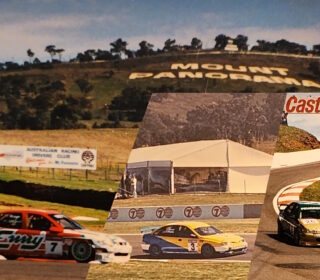Unseen Sandown

Recently here on The Race Torque, we have examined the incredible heritage of Sandown Raceway, the venue of Australia’s first ever race meeting, plus its future, with a deep dive into the latest development plans for the immense suburban block.
In this latest feature, we look behind the curtain at the current state of this classic venue, including some remarkable historic remnants hiding in plain sight.

International circuit relics
With a plan to bring Formula 1 to Victoria, the Light Car Club of Australia pushed the barrow to reinvent Sandown Raceway in the early 1980s to modern specs. Among the hurdles that existed was track safety, which had to be brought up to spec, and also a longer circuit was needed to satisfy international requirements. The original 3.1km long, eight-turn configuration was drawn out to 3.878km and 17 corners. All said, three key areas were changed, including the turn 1-2-3 sequence which essentially ran over the top of the old pit area, an infield loop was added that bypassed Rothmans Rise/Marlboro Country and re-entered at the reconfigured Dandenong Road Corner, plus an extra chicane was installed, constituting the final sequence of corners.
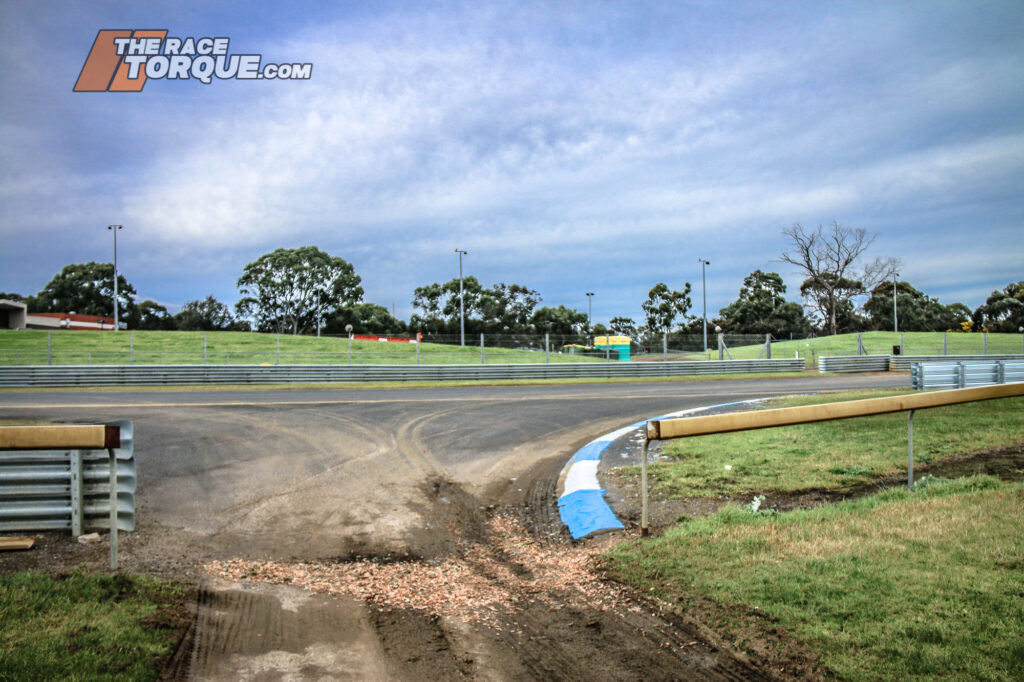
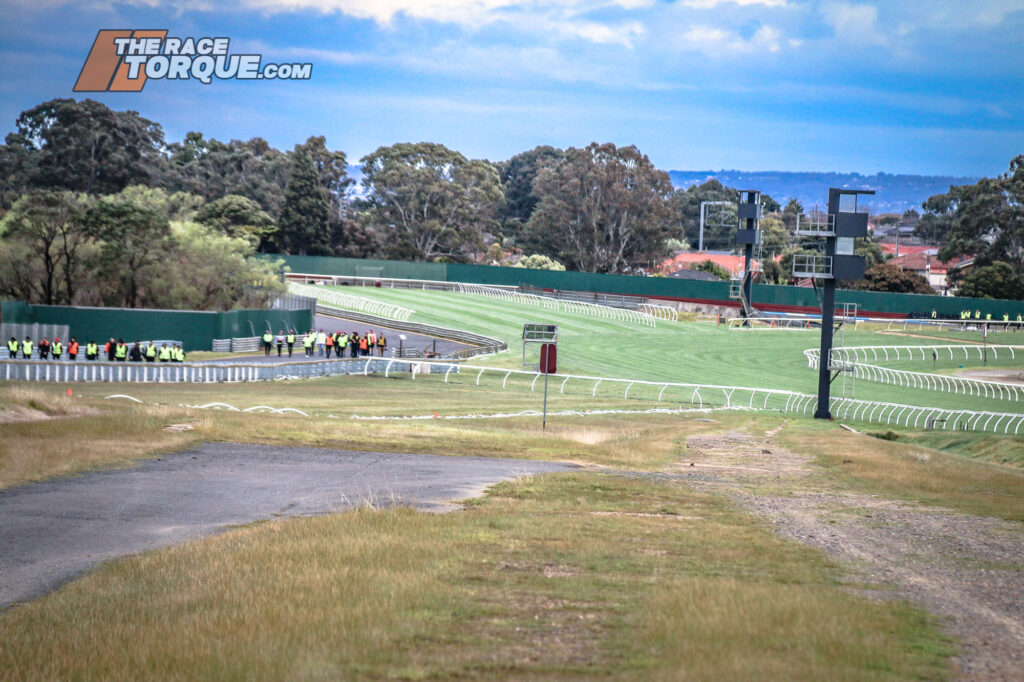
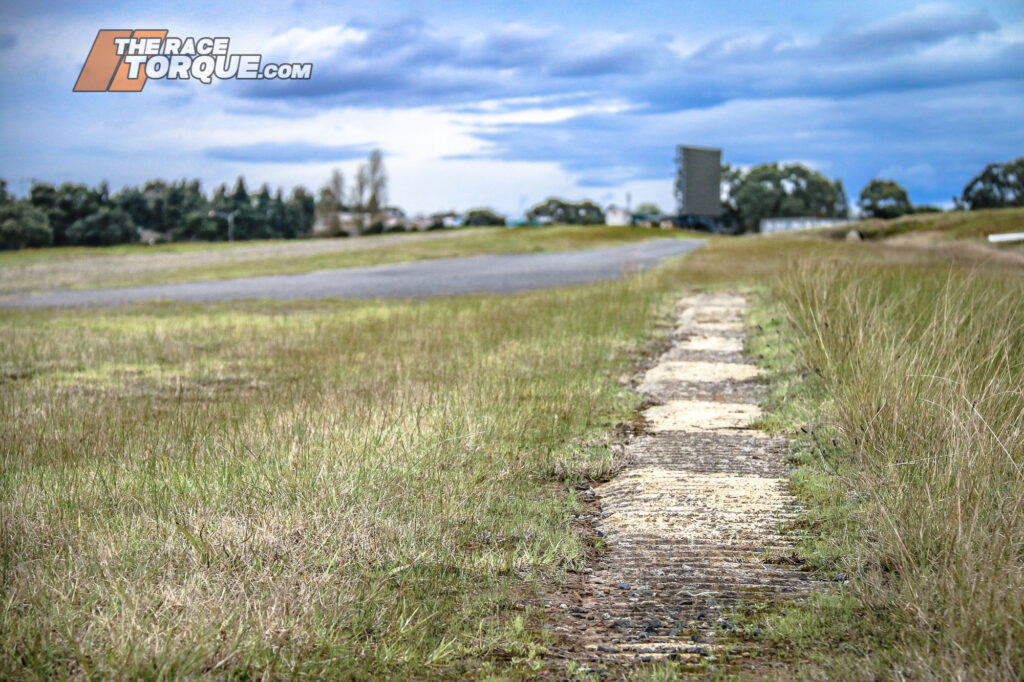
To start the 2022 tour of Sandown, we’re looking at what’s left of that much-unloved infield loop, which when built in 1984, crossed the outer horse racing track twice. With computer modelling dictating runoff for prospective F1 tracks, the dive over the rise into the Esses simply wouldn’t provide an adequate area between the track and the property boundary, which pushed designers towards utilising empty space near the horse track. The layout was used extensively through to 1989, including for the two World Sportscar events, and sparingly since. The configuration ultimately was the pick of choice for motorcycle competition, thanks to its improved safety margins. The loop kicked off to the driver’s left near the peak of the backstretch crest with a tight hairpin, which led to a short downhill run into an even tighter descending right-hand hairpin. The track swept around to the left, following the inside horse track, before a tight right, and a sinuous batch of switchbacks into Dandenong Road Corner.


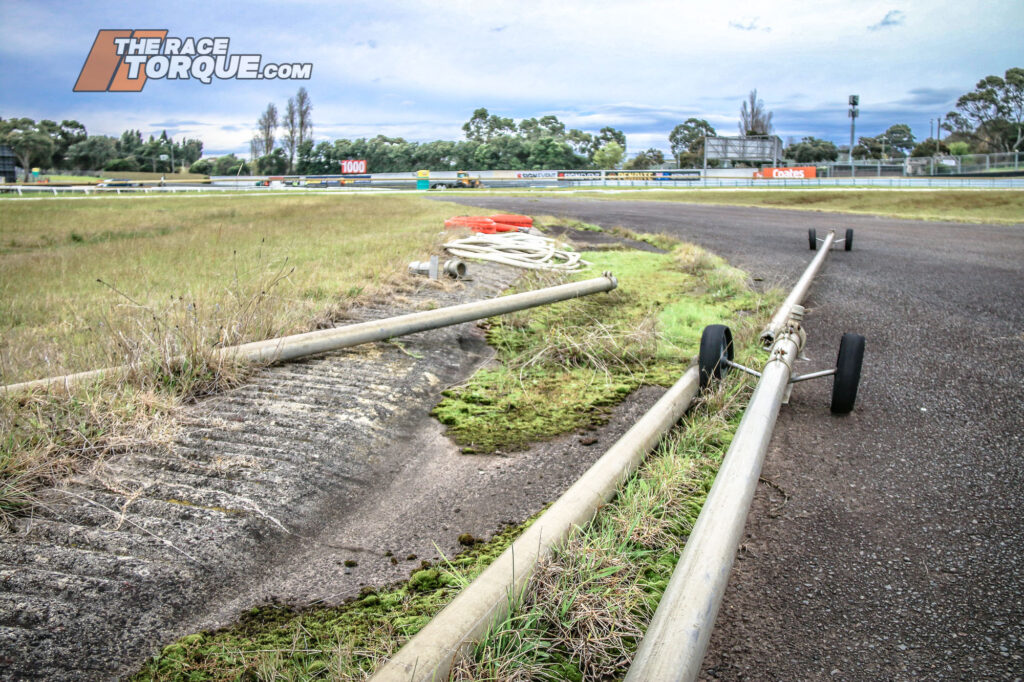
Evidence remaining to this day includes the kerbs connecting the entry and exit of the loop to the main circuit, alongside a small patch of the bitumen near the entry to the loop, plus the ripple strip at the second hairpin, which is fading into the grass. The next portion of the circuit has gone altogether, it was swallowed up by renovations to the horse track in 2002, which likewise took a chunk out of the final switchback near Dandy Road. However, from the horse track back to the circuit proper, much of the 10m wide ribbon of blacktop remains in place.


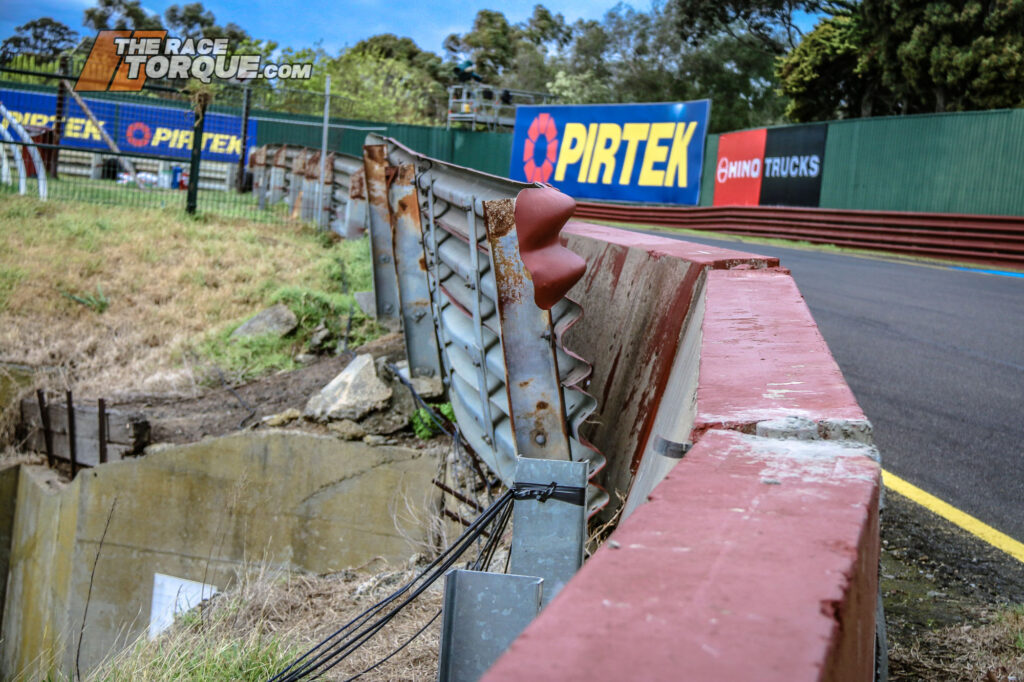

The old pits
As a part of the 1984 renovations, $600,000 was spent to relocate the original paddock area to the new pits at the top of the main straight, although its planned second-level suites were never completed. The original track configuration saw the start-finish straight continue on for a distance, before hooking left with a bare minimum of runoff. There are still reminders from the period around today, such as the original access road onto the circuit, which is now barely visible, buried under a supplies area to driver’s right of the gravel trap, while the remains of the old pit straight leading into the current turn three has been overgrown by grass in recent years. The original paddock toilet block remains, below, although it has now been cordoned off from use by those working on the infield. The tunnel, as above, is now situated between turns three and four, and importantly allows single-lane vehicular access to the infield. The original over-track turn one sign was seemingly moved upstream to its current position at the time of the 1980s renovation, see below.
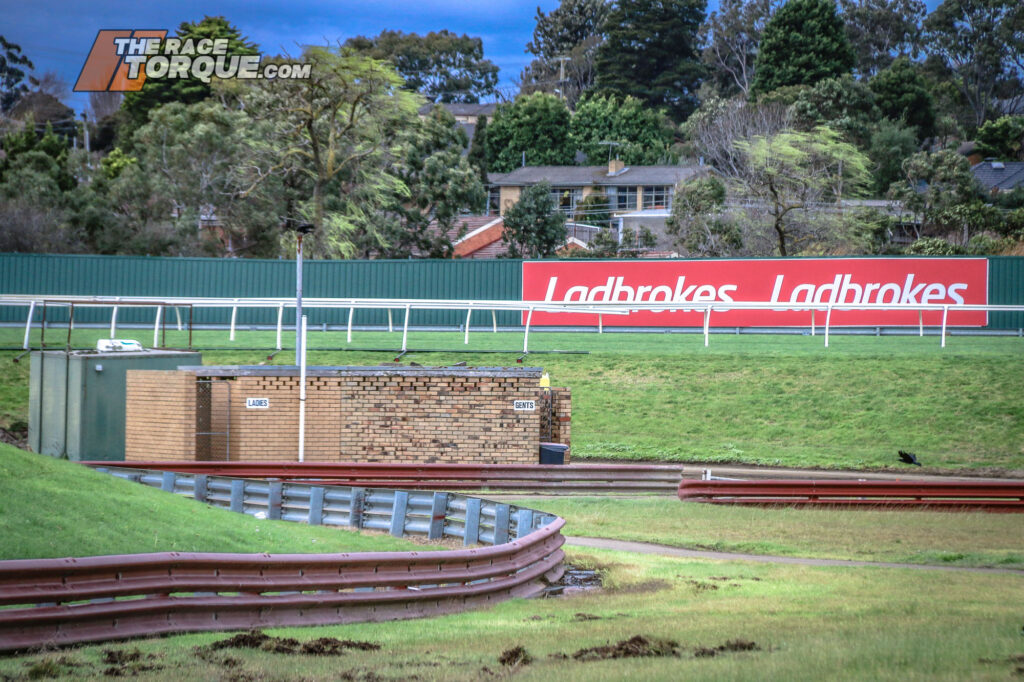
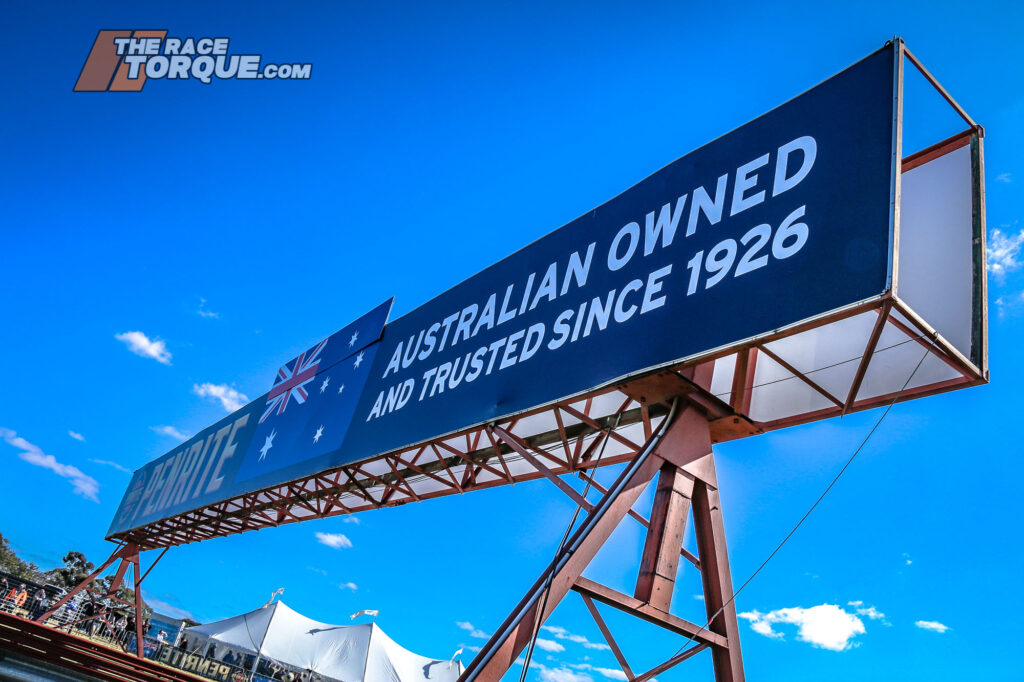
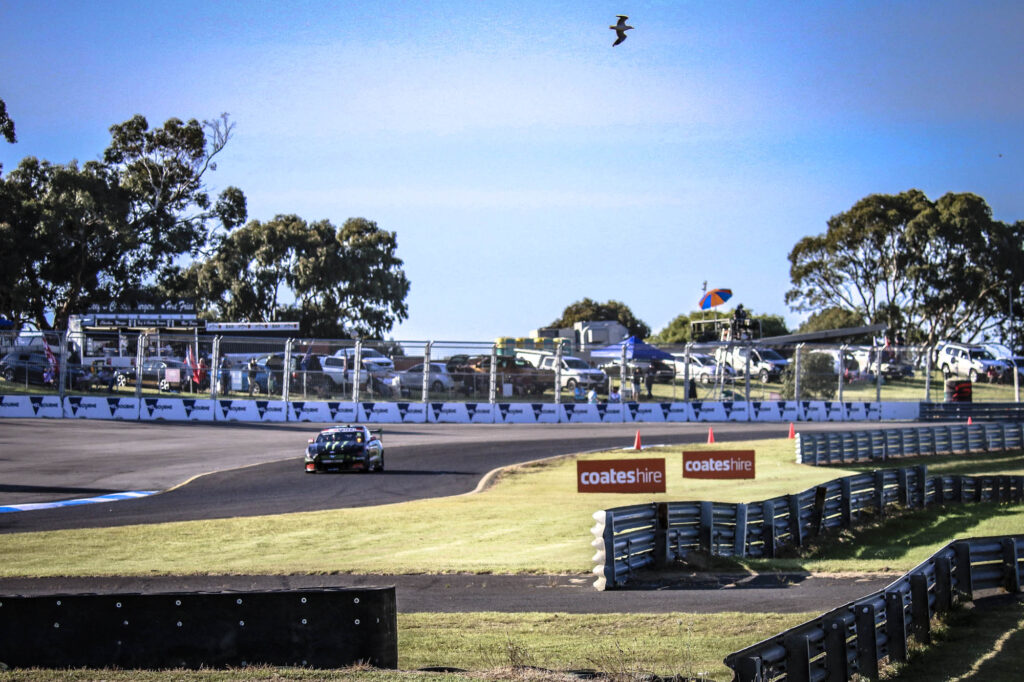

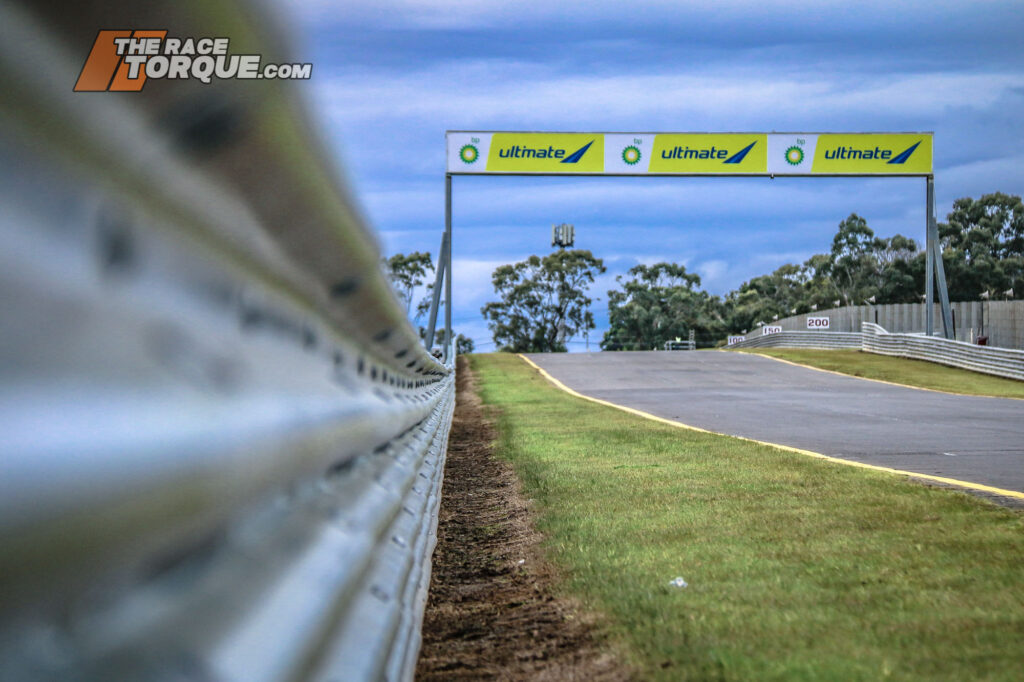
A matter of fencing – the new
In the past year, much of the back straight section of the circuit has seen a safety upgrade, with the installation of new three-high Armco barriers, with the renovations extending into the Esses (top pair of images, left 2021, right 2022). A significant investment, that wouldn’t have been made if the facility was only planning on having a short-term future.


Two high
Sandown is unique on the Australian motorsport landscape with its continued approval of two high Armco in various areas around the circuit. Although dependence on this configuration has come down markedly over the years, it was the apparent minimum allowed in some areas in the mid-80s. It has survived to this date on both sides of the track after turn one into turn two, the left-hand side along the initial portion of the back straight, and at a couple of places on the inside of the Dandenong Road complex.


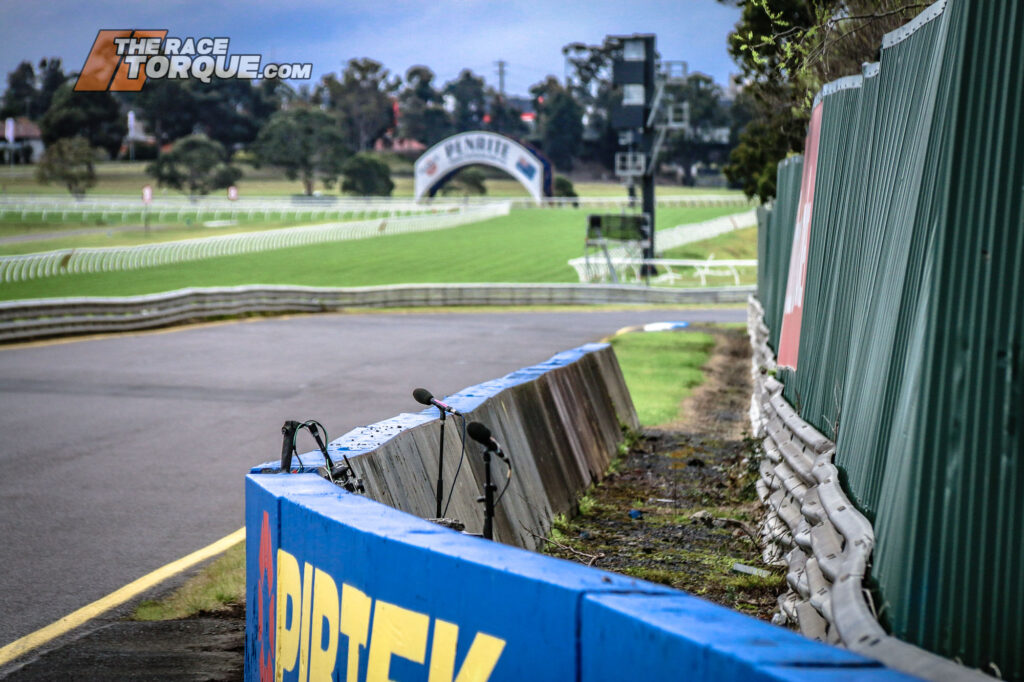
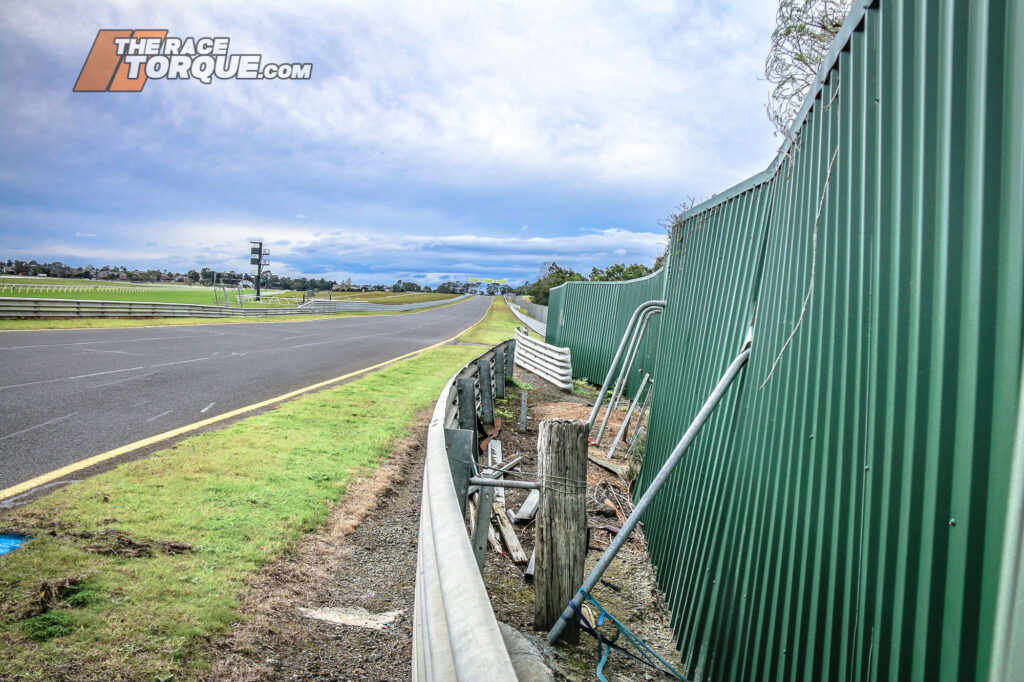
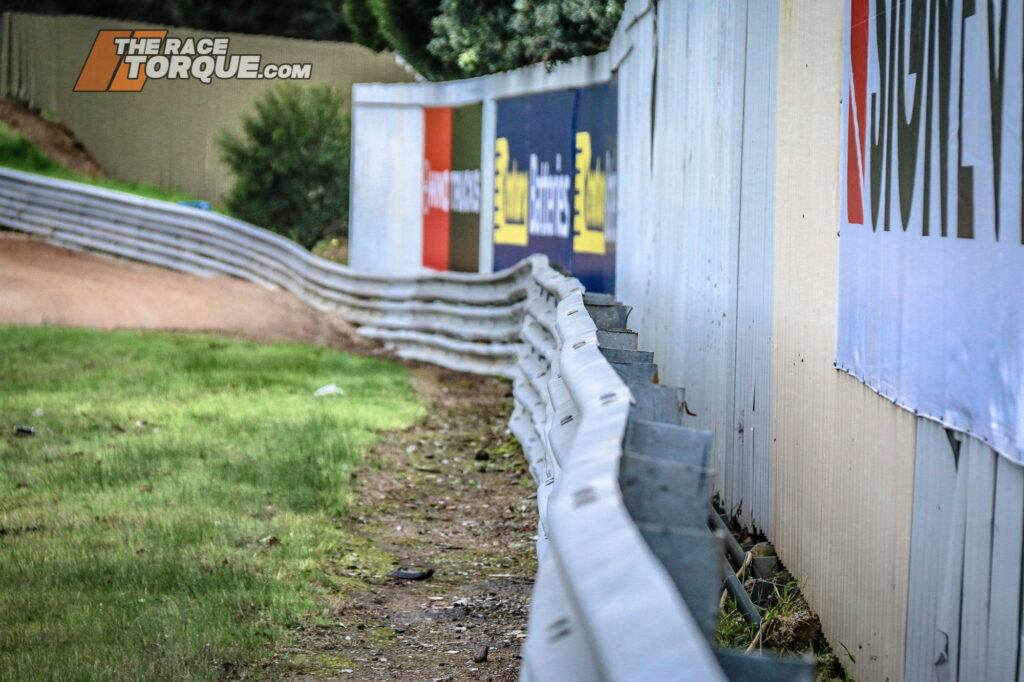

Elsewhere around the track, the Armco barriers, which have been bolstered by concrete in multiple places, and carry multiple scars from past battles, which more added since these photos were taken.
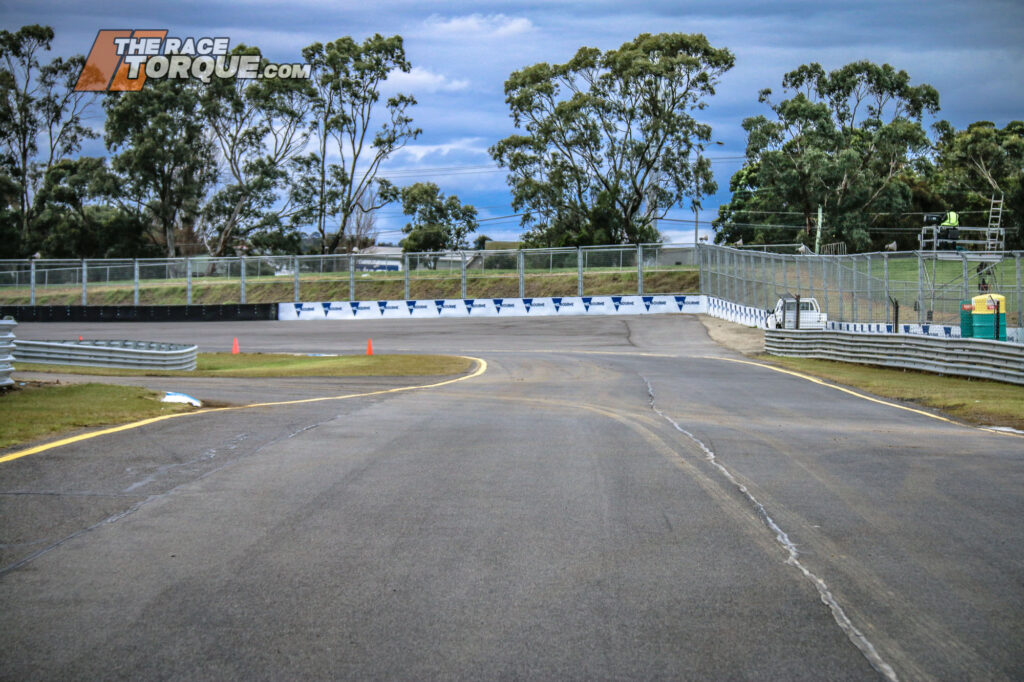

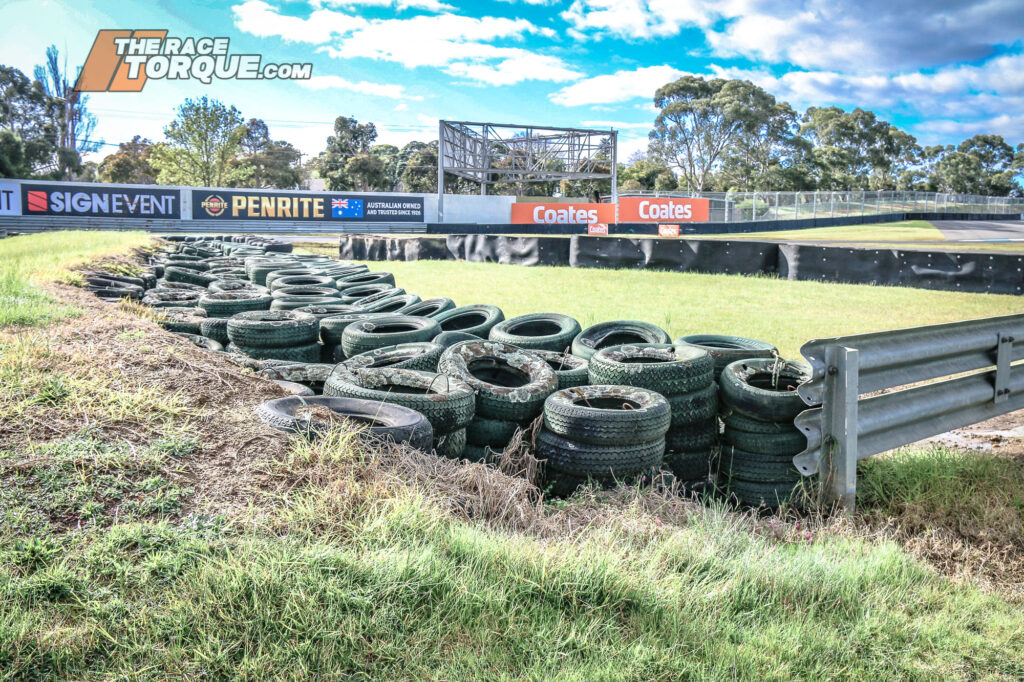

Esses
A series of vicious shunts to the right of the Esses saw the area receive a massive re-working in 2019, with the old tyre-lined Armco replaced with a paved runoff, complete with surplus Grand Prix-spec concrete barriers and catch fencing. While that area has been improved, the worst accident witnessed subsequently has been to the left, when in 2019 John Iafolla barrel rolled his Toyota 86 over the fence and into a ute. Unfortunately, space is at a premium in this area, with the 1000m starting chute for the Hillside horse track dictating circuit design.
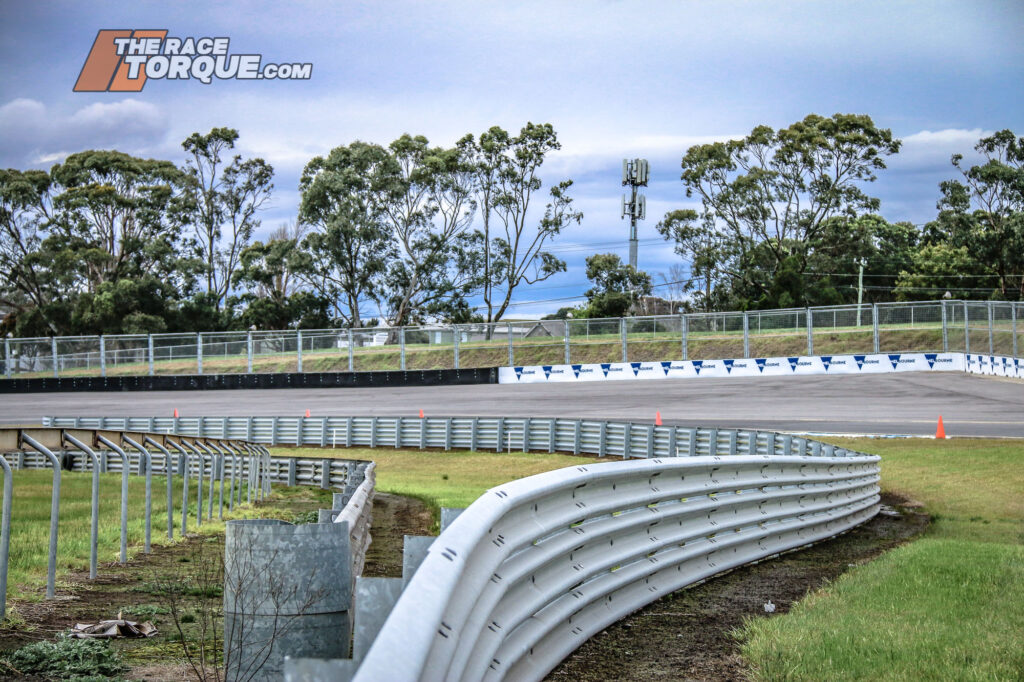
Curiously, the recent works in the area have included the above fresh wall design, which has the potential to meet errant vehicles at a nasty angle before deflecting them back towards the newly paved runoff.
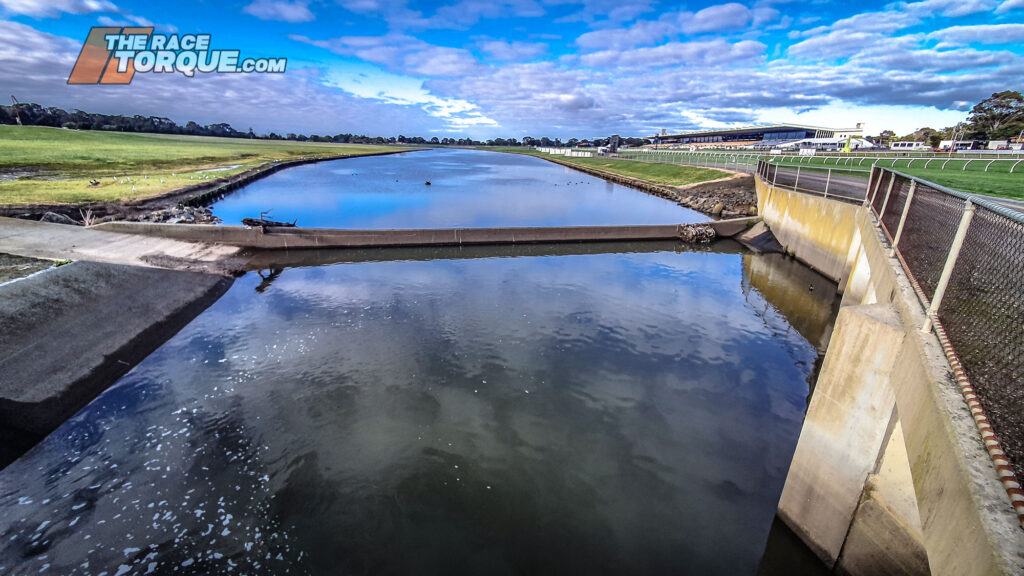
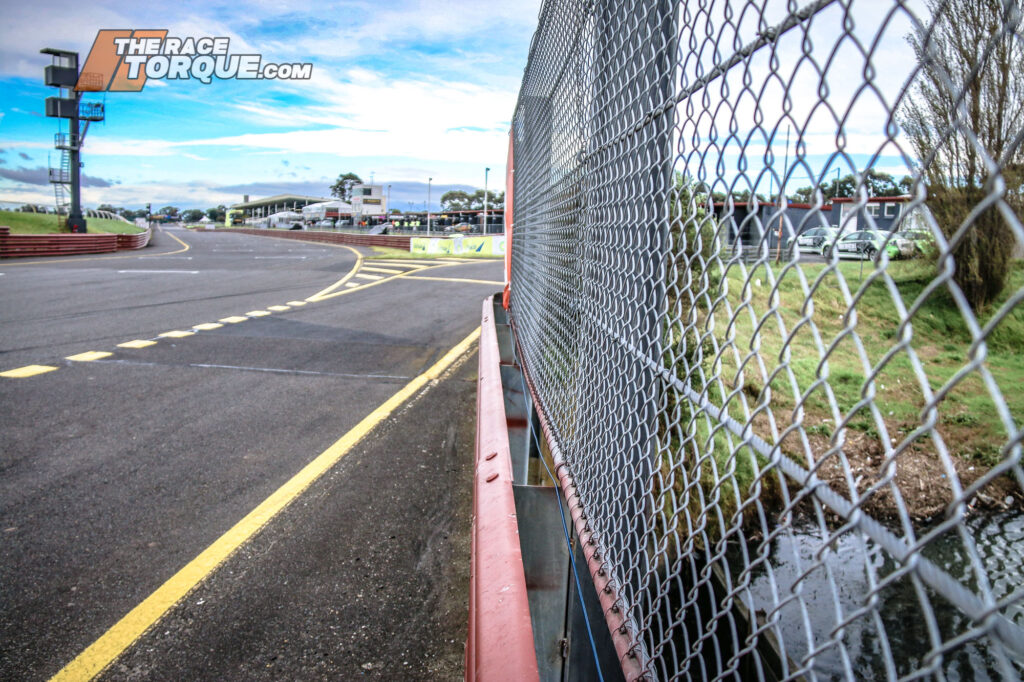

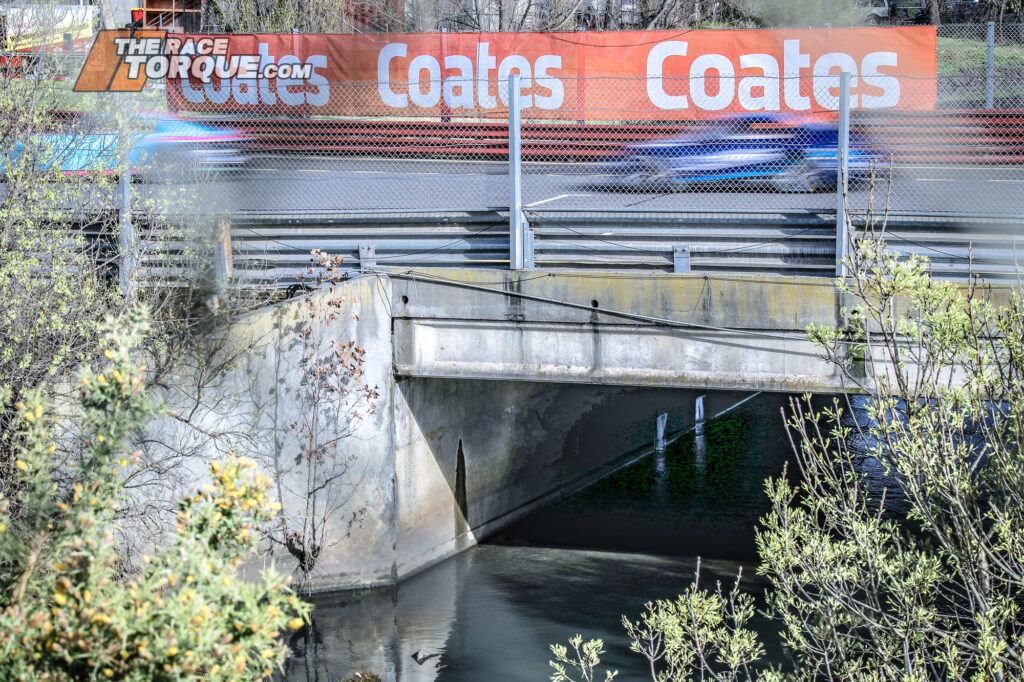
Causeways over waterways
One of the features of the Sandown property is Mile Creek, which runs from the top of the pit straight, through to the kink near the start of the back straight. Water flow is regulated through the property with a series of weir structures, which ensure that the lake on the infield of the racecourse remains full at all times. Subsequently, the track crosses the creek in two places, with the circuit following the original layout in these areas, including the famed Causeway, which is positioned directly to the north of the current pit entry. This particular length of track was originally a flat-out left-hand blast, and was the site of several nasty incidents, including Alan Hamilton’s horrible wreck in the 1978 Australian Grand Prix. Following the implementation of a chicane and the removal of the old Dunlop Bridge in 1984, safety in this area was vastly improved, while also opening up a new overtaking zone.
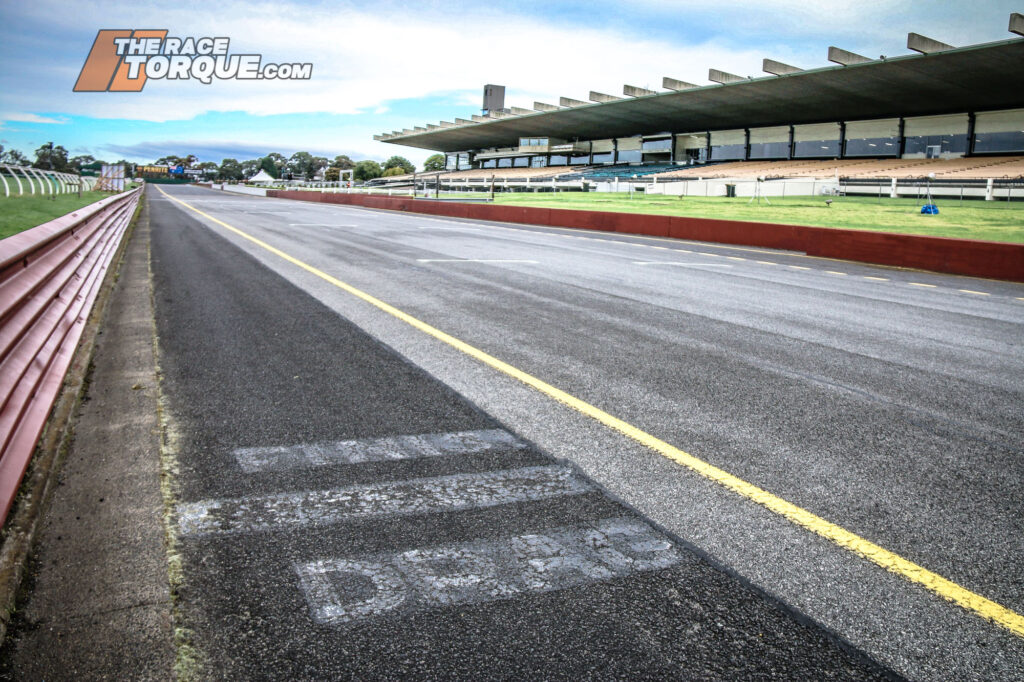


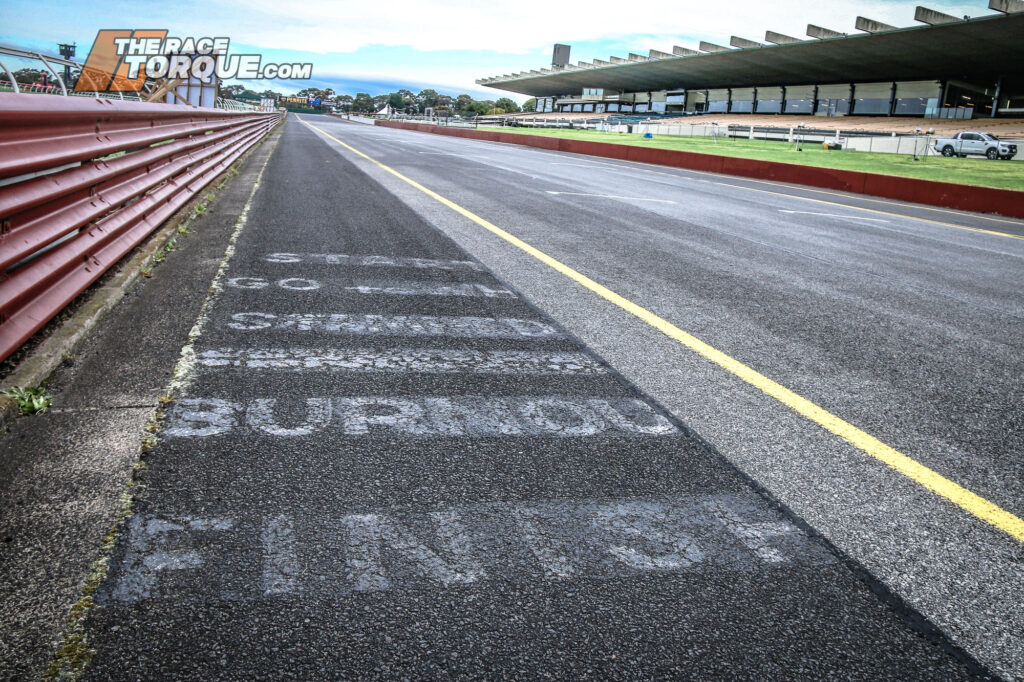
The Easternats
Kicking off in 1997, the Easternats grew a cult following at Sandown through to the event’s demise in 2009, with a combination of high octane drags and burnouts. Infamously, in 2010 the falling through of a planned revival of the event wound up with hoodlums rioting at the nearby Oakleigh Bob Janes T-Marts franchise. Evidence of the Easternats can still be found in multiple places around the fringes of the racing surface today.
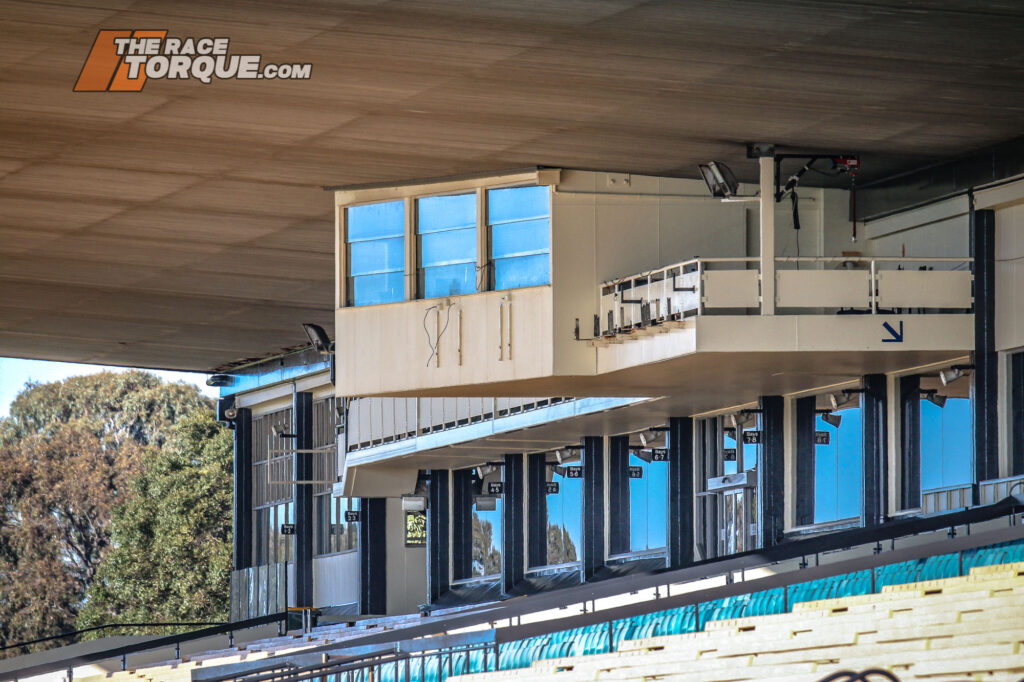

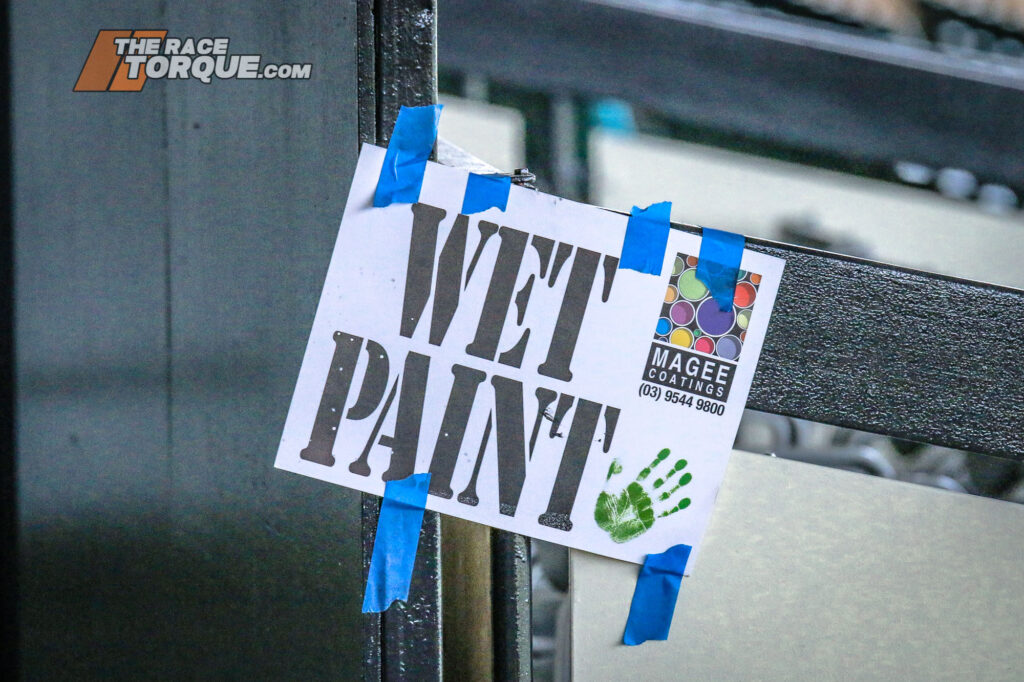
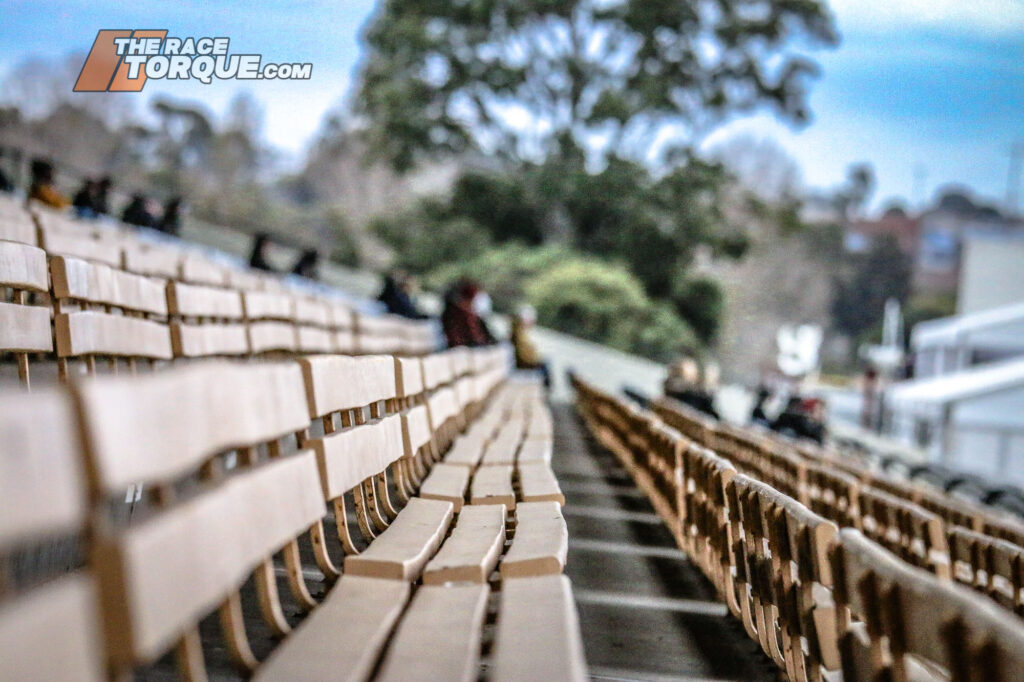

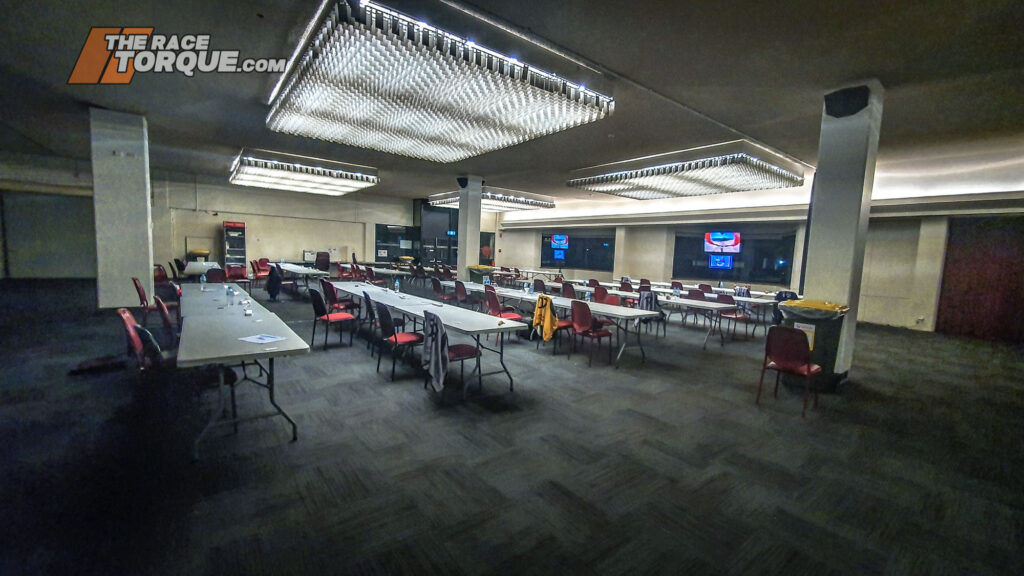

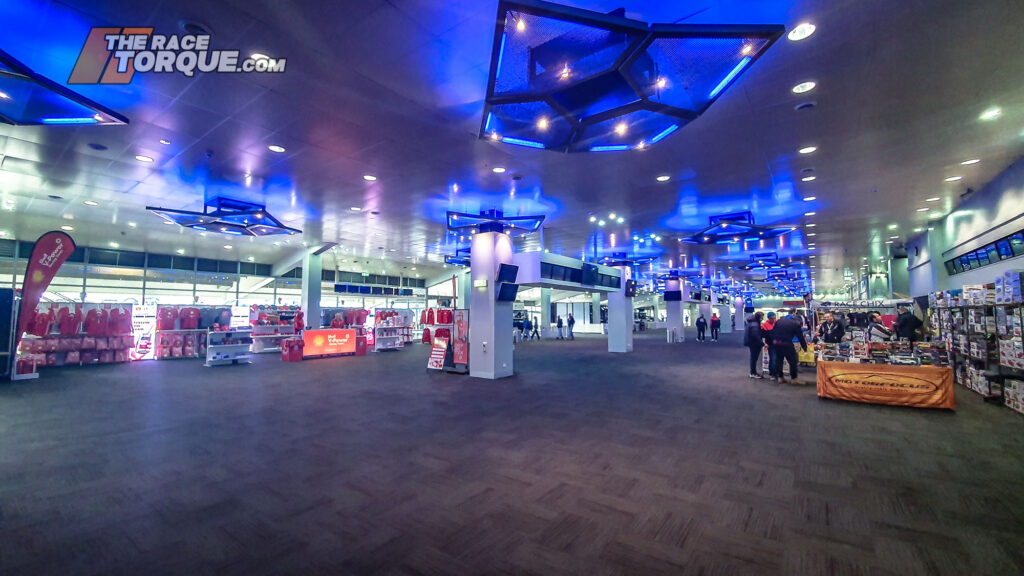
The Thomas S Carlyon Stand
Originally named after the Vice-Chairman of the VATC, as reported on these pages previously, Sandown’s grandstand was heritage listed in 2019. When the venue first opened, it was state of the art, with an impressive 65 TV sets dotting the facility. Extended to its current form in 1976, the basis of the structure has remained intact since the early 1960s, with our previous feature outlining the various facelifts it has received. In more modern times, the grandstand was used as a vaccination centre, giving attendees a wonderful view of the facility while their needles were prepared in the adjacent bar areas. Today, the structure remains neat and tidy, and when full provides some of the best atmosphere in Australian motorsport, with its excellent vantage of the starting grid extending to most corners of the facility. In the bowels of the stand, several areas provide important functions on Supercars race weekends, and frankly, lead the calendar in their amenity. Examples include the indoor merchandise area, the undercover car display section, the corporate hospitality areas, and the function rooms, that double as an officials muster point, conference area and media centre. There is ample space and handy conveniences, however, in a sign that the venue has stood still in some respects over recent decades, the ad behind the old bar in the media centre for Schweppes Diet Cola dates to at least the year 2000.
Elsewhere around the grounds
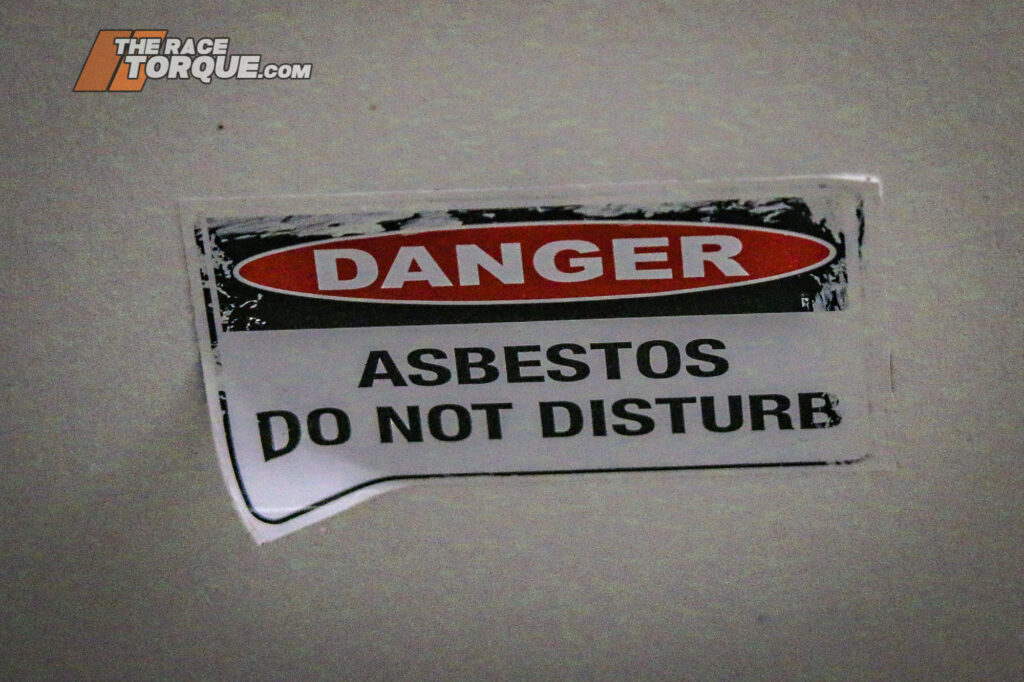

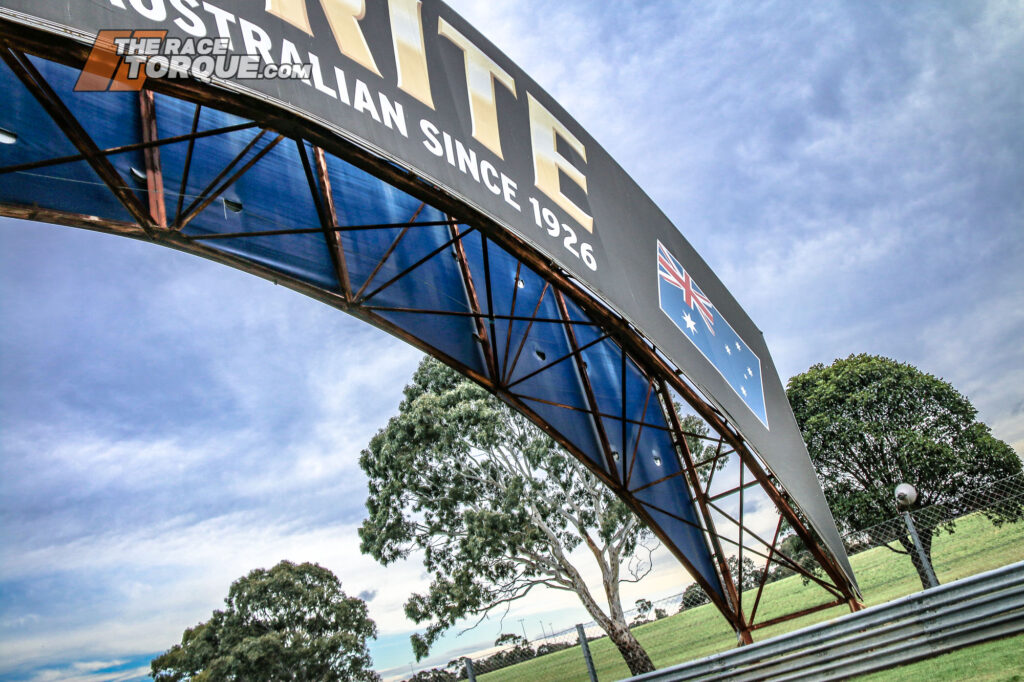


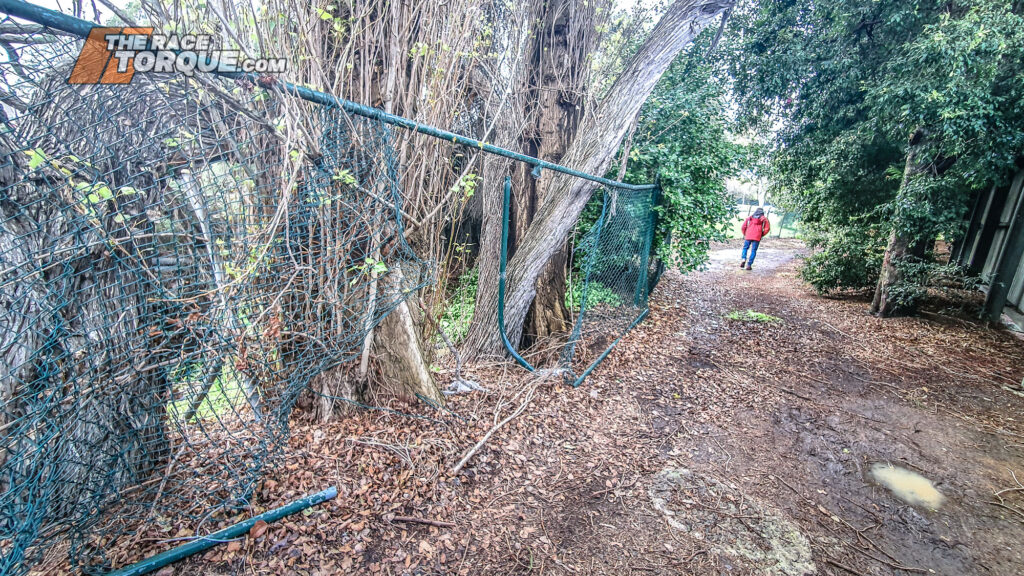

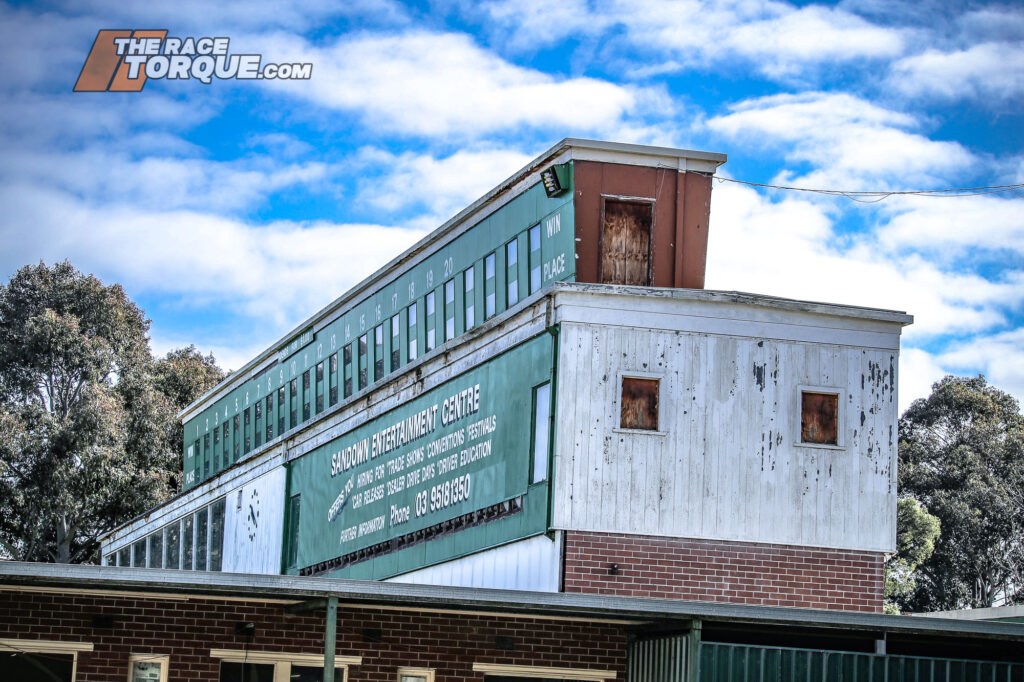
In a literal sign that the facility is a baby of the 1960s, the above asbestos warning can be found in the toilet block between the grandstand and the current pits. At the top of the rise. the marshals gather around the old concrete footing for the over-track bridge that displayed brands like Rothmans and Marlboro, which on the opposite side was nearly cleaned up by Johnnie Walker’s errant F5000 in 1975, amongst others. Even though Sandown is only allowed five race meetings a year, the MRC has invested massively in noise barriers around the perimeter of the circuit, which have forced the Supercars media folk to set up their turn-one camera essentially outside of the venue.




